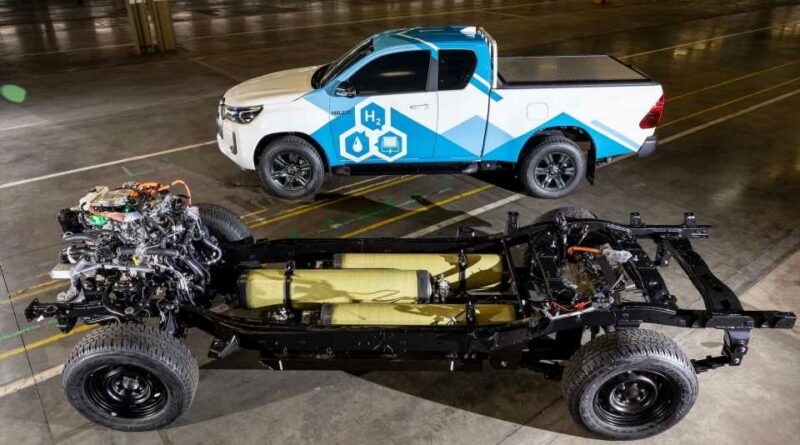Toyota Hilux Hydrogen Fuel Cell Prototype Debuts With Estimated 365-Mile Range
Toyota built its first Hilux Hydrogen Fuel Cell Prototype at its Burnaston vehicle plant in Derby, England. It is a joint project with consortium partners and was supported by UK government funding. The automaker intends to build 10 of them before the end of the year.
This Hilux’s powertrain uses parts from the Toyota Mirai. The automaker estimates that it has a range of 365 miles between hydrogen refills. For comparison, the Australian-market Hilux with the turbodiesel 2.8-liter engine can go about 715 miles (1,150 kilometers) between fill-ups.
Gallery: Toyota hydrogen-fuelled Hilux Prototype pick-up
Images show that the hydrogen tanks fit between the frame rails roughly where the cabin fits. The other fuel cell components are under the hood, where the combustion engine usually is. The battery is at the rear.
Toyota started this project in early 2022 as a feasibility study. Design and development began on July 1, 2022. The company started building a prototype on June 5, 2023.
The automaker intends to put the 10 prototypes through testing to make sure the model lives up to the Hilux’s rugged legacy. Toyota is prepping safety performance, functionality, and durability tests for them. The company wants to understand the opportunities and risks of a fuel-cell-powered pickup.
In December 2022, Toyota showed off the electric Hilux Revo BEV Concept. The automaker didn’t release any details about the truck at that time, like battery or motor specifications. During the presentation, Akio Toyoda said, “BEVs are not the only way to achieve the world’s carbon neutrality goals.”
Also in 2022, Toyota announced that it intended to build a light-duty pickup with a hydrogen fuel cell as a joint project with Isuzu and Hino. The company didn’t specify a time frame for putting this model into production.
Toyota is also considering whether to make a fuel-cell-powered version of the Land Cruiser. Plug-in hybrid and fully electric versions are also a possibility. At this point, it’s not clear which, if any of these, would actually go into production.
Source: Toyota
Source: Read Full Article



